

BioDigital: 3D Human Visualization Platform for Anatomy and Disease. Acceptable Alternatives in Assessment and Grading. Assessment orthodoxy is easy, but for those trying to lead (whether by title or by influence) the transformation of assessment and grading practices, orthodoxy often falls short of inspiring or assisting teachers in moving away from antiquated practices.
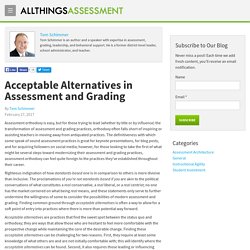
The definitiveness with which some speak of sound assessment practices is great for keynote presentations, for blog posts, and for acquiring followers on social media; however, for those looking to take the first of what might be several steps toward modernizing their assessment and grading practices, assessment orthodoxy can feel quite foreign to the practices they’ve established throughout their career. Righteous indignation of how standards-based one is in comparison to others is more divisive than inclusive. Here is one example. An acceptable alternative I’ve presented to many teachers, given the homework dilemma mentioned in the previous paragraph, is to grade homework temporarily. The #MaxYourDays Mural: Celebrating Physical Literacy Journeys - ThePhysicalEducator.com. How To Plan A Physical Education Curriculum - ThePhysicalEducator.com. #PhysEd Learning Roadmaps - ThePhysicalEducator.com.
One of the areas of my teaching that I’m constantly trying to improve is my assessment.
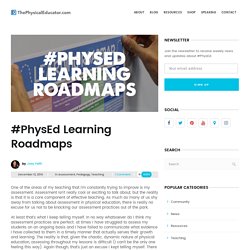
Assessment isn’t really cool or exciting to talk about, but the reality is that it is a core component of effective teaching. Simple Assessment For Physical Education - ThePhysicalEducator.com. Over the past year, I have been using Plickers and magnets as assessment tools in my physical education lessons.
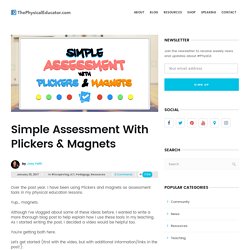
Yup… magnets. Although I’ve vlogged about some of these ideas before, I wanted to write a more thorough blog post to help explain how I use these tools in my teaching. As I started writing the post, I decided a video would be helpful too. You’re getting both here. Let’s get started (first with the video, but with additional information/links in the post!) Plickers Cards You’ve probably heard about Plickers before. Here’s how they work: each Plickers card is numbered and each has a unique code.
Students share their answers by holding the side of the card representing their answer up and with the code facing the teacher. Mini Coaching: Effective Peer Assessment In Physical Education - ThePhysicalEducator.com. Physical Education Student Portfolios - ThePhysicalEducator.com. For the last few years, I have been maintaining student portfolios for the classes I teach in physical education to keep track of my students’ progress and stay on top of my assessment.
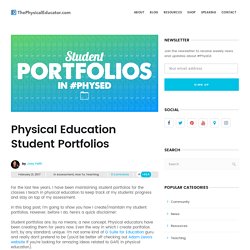
In this blog post, I’m going to show you how I create/maintain my student portfolios. However, before I do, here’s a quick disclaimer: Student portfolios are, by no means, a new concept. Physical educators have been creating them for years now. Even the way in which I create portfolios isn’t, by any standard, unique. Over the years, I’ve been influenced and inspired by fellow members of the online #physed community. Here are some of the people/posts that have had the biggest impact on my thoughts/methods surrounding student portfolios: Andy Vasily (@andyvasily) – The Sportfolio Nathan Horne (@PENathan) – Google Apps for #PhysEd: Combining Drive & Sites for Portfolios Matt Pomeroy (@PhysEd_Pomeroy) – Google Forms + autoCrat = Educational Gold. How To Grade In Physical Education - ThePhysicalEducator.com.
There are many, many things that I absolutely love about my job.
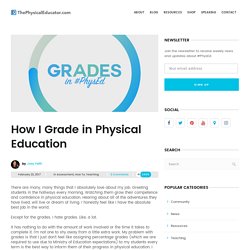
Greeting students in the hallways every morning. Watching them grow their competence and confidence in physical education. Hearing about all of the adventures they have lived, will live or dream of living. Training. Este programa no está disponible en español en este momento.

Estamos trabajando en una versión español. Por favor, vuelva más tarde o utilizar la versión Inglés. Sextortion: Your Students Are at Risk, Teachers Can Help. Sextortion is a shocking new way online predators are targeting kids.
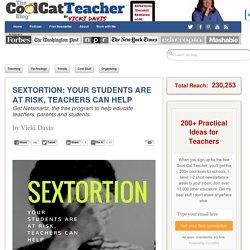
At ISTE this week, I was upset when the National Center for Missing and Exploited Children explained this disturbing trend to me. Cybertip.ca. A STEP away from the lesson plan. – drowningintheshallow. For the first part of my career I spent most of my time honing my knowledge and skills to become more competent in my job as a Teacher of PE.
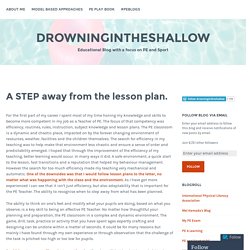
The focus of that competency was efficiency; routines, rules, instruction, subject knowledge and lesson plans. The PE classroom is a dynamic and chaotic place, impacted on by the forever changing environment of resources, weather, facilities and the children themselves. The search for efficiency in my teaching was to help make that environment less chaotic and ensure a sense of order and predictability emerged. I hoped that through the improvement of the efficiency of my teaching, better learning would occur. In many ways it did. The ability to think on one’s feet and modify what your pupils are doing, based on what you observe, is a key skill to being an effective PE Teacher. David Court suggests Throwing away the plan if perhaps if that is what is needed. Like this: Like Loading... The Message and the Messenger.
Stories. We hosted our first PE 9 Health & Careers Expo last week and the event was a huge success!

Students posed various health and career questions (to cover the Health and Career 9 curriculum) and we used inquiry to dig deeper. The process was most important and students learned various skills along the way, but the products ended up being very impressive.
Social and Community Health. Healthy and Active Living. Physical Literacy.